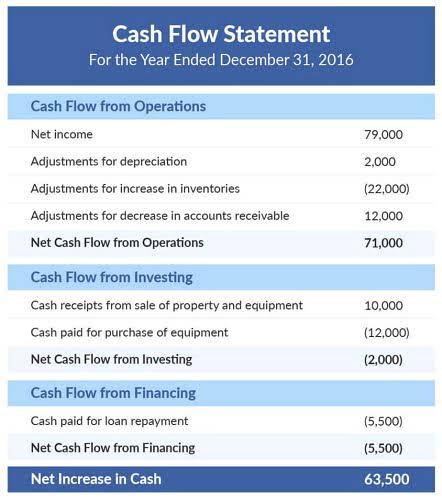
Leveraging the power of management accounting to make data-driven decisions will help you lead your organization toward a prosperous future. Effective communication of financial information is crucial in management accounting. Decision-makers managerial accounting need concise reports to understand the organization’s financial health and make timely decisions. Managerial accountants prepare reports that present financial data in a format that is easy to comprehend and interpret.

Performance Measurement and Analysis
Once a business has identified constraints or bottlenecks, it can evaluate them, investigate what is causing them, and determine whether steps can be taken to eliminate them. Find out what managerial accounting is, how it works, and the different types of methods. This guide explains the differences between each type of accounting, as well as how businesses can use both to complement one another. Learn about managerial accounting the different types, careers, and how to enter this field. This way, the team avoids costly mistakes and improves the company’s ability to achieve its objectives. If you want to take the next step into the world of managerial accounting, there are a few ways you could start.
- Better optimization of resources can be achieved by having this understanding of all expenses, including inventory waste, hourly labor costs, and overhead costs.
- Typically, this high-level planning involves creating a capital budget, which details the costs of any investments to be done in the future.
- Without good managerial accounting, corporate leadership can struggle to make appropriate choices or misunderstand the firm’s true financial picture.
- Overhead charges are calculated and allocated to come up with the actual cost related to the production of a product.
- Tax accountants might audit your business if the IRS notices tax incongruences, or forensic accountants if law enforcement agencies suspect financial wrongdoing.
- By considering these factors, businesses can protect their brand image, ensure legal and ethical compliance, and promote sustainability.
Providing relevant information
- Most companies don’t use all of them, but the relevant use cases vary by organization, often depending on a company’s size, the industry, and even the practices and preferences of individual managers.
- Managerial accounting helps you overcome this by providing cost-benefit analysis and relevant financial data.
- Budgets serve as roadmaps, providing a clear direction for resource allocation and performance evaluation.
- This data must be recorded, processed, concise, and presented in a manner that becomes easily understandable while making managerial decisions.
- At any level, managers work closely with the managerial accounting team to help in each of these stages.
- The information guides business managers, investors, and creditors in planning and decision making.
In other words, the master budget is the perceived results of the business’ efforts in achieving business goals. It serves as a guide for all members of the organization to align their personal goals with the growth of the business. It is important to include employees in the budgeting process since their participation enhances morale and encourages them to be proactive rather than reactive. Given the time length involved in many plans, the organization also needs to factor in the potential effects of changes in their senior executive leadership and the composition of the board of directors.
Decision-making
You can rely on accurate financial information to make well-informed choices for the company’s success. It is a vital aspect of financial management that helps you make informed business decisions. Management accounting involves collecting, analyzing, interpreting, and communicating financial data. Managerial accounting plays a crucial role in providing valuable information and insights to support internal decision-making and management within organizations. Throughout this article, we have explored the various types of information that managerial accounting provides and how each one contributes to the effective management and operations of a company.
Cost accounting
A company that exhibits positive cash flow means that liquid assets exceed debt payments and short-term financial obligations. All raw material costs, overhead, labor and any added costs are considered, and those totals are divided by the amounts of products produced. Managerial accountants identify patterns and trends in historical data, investigate data fluctuations and variances, derive actionable insights, and make projections about future trends. Capital Budgeting refers to the process of evaluating potential investments and projects, such as real estate, new equipment, or repairs to determine whether they are worth pursuing. Accountants use a variety of calculations to assess the value and return on investment the proposed capital investment offers. Since managerial accounting is used for internal purposes only, it is not required to conform with accounting standards, such as GAAP.
Inventory valuation and product costing

A managerial accountant will use this information to determine the price point for products and services. Managerial accounting, also known as management accounting, refers to the process of collecting, measuring, analyzing, and presenting financial information to managers. The purpose of managerial accounting is to help managers control and optimize business operations.
- They aid in evaluating the financial feasibility of investment opportunities, assessing the impact of potential changes in the business environment, and identifying potential funding gaps or surplus.
- It does this by organizing customer and prospect information in a secure, easy-to-use digital record with information like a contact’s email, telephone, social media handle, all previous interactions with your company, and more.
- Understanding the cause and effects of past bottlenecks can help with policy design and strategic planning.
- Application security protects applications running on-premises and in the cloud, preventing unauthorized access to and use of applications and related data.
- Management accounting involves preparing budgets that outline the financial targets for the organization in a period.
- Budgeting often includes both financial data, such as worker pay rates, and nonfinancial data, such as the number of customers an employee can serve in a given time period.
Below are a few of the types of analysis involved in managerial accounting to achieve a company’s high-level objectives. Managerial accounting is used to perform cost-benefit analysis for new projects and provide ongoing reports for existing projects. These projects might involve significant outlays of cash or capital as well as new debt to finance them. As a result, managerial accounting is critical to ensuring that these projects are delivered within budget and in a timely manner while also being profitable. Managerial accountants help business leaders evaluate projects and investments and make decisions about buying or selling assets. For this, capital budgeting employs techniques like net present value and internal rate of return to evaluate the viability of the projects or investments.

- By implementing effective risk management strategies, organizations can minimize losses, protect assets, and make informed decisions.
- He’s a co-founder of Best Writing, an all-in-one platform connecting writers with businesses.
- Attack surface management (ASM) is the continuous discovery, analysis, remediation and monitoring of the cybersecurity vulnerabilities and potential attack vectors that make up an organization’s attack surface.
- It is important to include employees in the budgeting process since their participation enhances morale and encourages them to be proactive rather than reactive.
- By using ratios to interpret figures in the financial statements, small businesses can assess the liquidity, solvency, performance, and profitability.